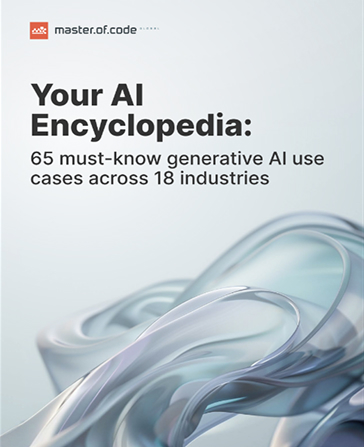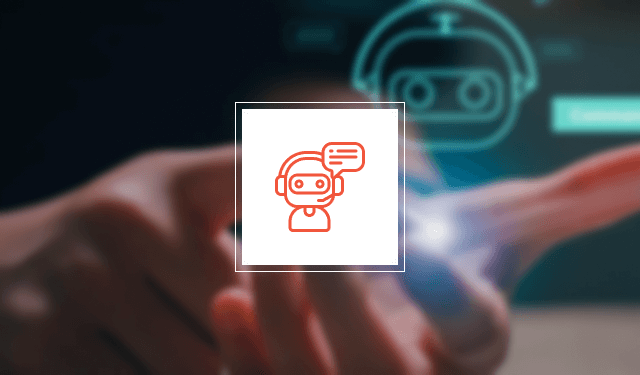AI continues to dominate business and everyday life globally. AI technologies are used both for personal and business goals, and its popularity is immense. Let’s explore some key artificial intelligence statistics you need to know in 2024 if you’re interested in AI:
- The global AI market is set to increase nearly twentyfold, from $100 billion today to a staggering $2 trillion by 2030.
- AI software is already generating over $50 billion in annual revenue worldwide.
- 65% of people trust companies that use AI to improve their services, highlighting growing consumer confidence in AI.
- Two-thirds of companies are already using or planning to apply AI.
- Approximately 80% of companies consider AI to be a top priority in their business strategy.
- 72% of executives believe that AI will be the most significant business advantage of the future.
AI continues to dominate the business and everyday life globally, with its popularity soaring and new Conversational AI and Generative AI trends emerging constantly. In this article, we’ll delve into some remarkable statistics that shed light on AI’s astonishing growth, trust, impact on industries, and its future.
Table of Contents
AI Market Size
The AI market is in the midst of an astonishing boom, with a current value of nearly 100 billion U.S. dollars. However, the real eye-opener is the projected growth. Experts anticipate a twentyfold increase by 2030, propelling it to nearly two trillion U.S. dollars.

- In 2022, the global AI market size surged to an impressive $136.6 billion. It’s a substantial leap from the $93.5 billion recorded in 2021.
- Currently, AI software globally earns over $50 billion in annual revenue.
- Predictions are nothing short of astounding, with the global AI market expected to reach an astonishing $1,811.8 billion by 2030. This means that AI will continue to fuel a digital revolution, and by 2025, it is poised to be valued at nearly $4 trillion.
The AI market is not merely expanding; it’s soaring to unprecedented heights. The pace of its growth is nothing short of remarkable, with a CAGR of 38.1% during the forecast period.
Trust in AI
Artificial Intelligence is gaining our trust in various ways. Here’s the lowdown on who trusts AI and why it matters:
- Consumers Trust AI: About 65% of people trust companies that use AI. So if a business uses AI to improve its services, most customers are okay with it.
- Keyword Data Trust: When it comes to AI-generated data, only 14.03% of users trust it. People are a bit cautious about data that comes from AI tools.
- AI in Search: Roughly 32.5% of users trust AI-generated search results. This means people are slowly starting to trust AI to give them good search answers.
- Leaders Value AI: Business leaders really believe in AI. In fact, 84% of them think using AI is essential for business growth.
- Consumer Confidence: More than half, that’s 52%, of adults trust companies that use AI.
- Transparency is Key: Only 39% think companies are good at telling them about their AI use. But when companies are transparent, trust level rises to 54%.
In a nutshell, AI is gaining trust, but people want to know what it’s up to. So, it’s important for companies to be transparent about how they use new technologies, including their AI development services.
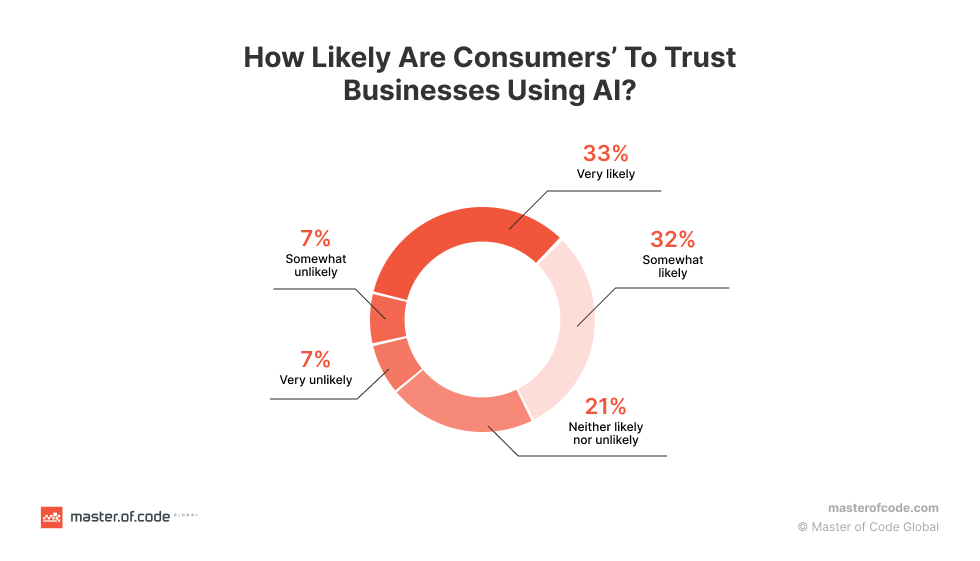
Artificial Intelligence Growth Statistics
AI is evolving at a rapid pace, reshaping the way we live and work. Let’s explore the astonishing growth details:
- Generative AI’s Soaring Popularity: The future of Generative AI chatbots is bright. More than 100 million people in the U.S. are expected to use it by 2024, and that number is set to climb to 116.9 million by 2025. In fact, over half of all Americans aged 12 to 44 are predicted to use new technology by 2025.
- AI Investment Surge: Generative AI is a hot topic among executives, with 96% discussing it with their boards. Moreover, the popularity of ChatGPT has led to a 45% increase in AI investment, according to 45% of leaders.
- Mixed Feelings on AI Speed: While AI is growing rapidly, 46% of U.S. adults express concerns that AI systems are being developed too quickly.
- AI Changing Lives: 66% of global adults believe that AI products and services will significantly change their lives in the next three to five years.
Usage of Artificial Intelligence Stats
As artificial intelligence continues its remarkable growth, it’s not just about the numbers; it’s about how AI is being put to work in practice:
- Businesses Embrace AI: In 2017, 20% of respondents reported adopting AI in at least one business area, while in 2022, that figure stands at 50%. An additional 42% are exploring AI for their operations. Larger companies are 100% more likely to use AI than smaller ones, but 41% of smaller companies are currently developing AI strategies.
- AI at Work: Among U.S. adults, 28% report that their employers use ChatGPT or similar chat-based tools. 19% mention AI image generators, 30% cite AI for data analysis, 21% use AI tools for video generation, and 17% employ AI for HR and recruiting. In response to AI’s growth, 35% of organizations are training and reskilling their teams to use new AI and automation tools.
- Generative AI Adoption: Surprisingly, 22% of respondents in a McKinsey survey regularly use Generative AI in their work, while 79% have had at least some exposure to it. A significant 48% of IT leaders mentioned their organizations are using it beyond ChatGPT. The biggest users of the new technology are aged 25 to 34, making up 21.4% of all users, followed by 35 to 44-year-olds (19.3%) and 18 to 24-year-olds (14.0%).
- AI Understanding: While 67% of adults say they have a good understanding of what AI is, only 51% can identify which products and services use AI (Source).
Artificial intelligence is not just a buzzword; it’s a reality that’s transforming the way we live and work. These growth and usage facts paint a vivid picture of AI’s rapid evolution and its impact on our world.
AI Adoption Statistics
In recent years, businesses and organizations have increasingly recognized the potential of AI to enhance operations, improve customer experiences, and drive innovation.
- approximately 55% of Americans engage with artificial intelligence either on a constant basis or at least once a day
- 44% of organizations are working to embed AI into current applications and processes, with two-thirds of companies already using or planning to apply AI.
- 25% of companies are adopting AI due to labor shortages, as AI helps optimize operations and compensate for a lack of human resources.
- For 4 in 5 companies AI is a top priority in their business strategy.
- Almost 100 million people are expected to be working in the AI space by 2025.
- The most common areas for AI adoption include ‘service operations’ and ‘strategy & corporate finance.’
- On average, organizations that have adopted AI use 3.8 different AI capabilities.
- An important factor driving AI adoption is easier accessibility (43%), followed by cost-cutting and process automation (42%).
- In 2020, 54% of customers had daily AI interactions with organizations, using technologies like chatbots, digital assistants, and biometric scanners.
- According to AI in eCommerce statistics, AI is expected to handle 80% of all customer interactions by 2023.
- The main barrier for businesses not adopting AI is a lack of expertise in how the technology works (34%).
- The number of AI startups since 2000 has increased 14 times, indicating significant growth in the AI industry.
- 72% of executives believe that AI will be the most significant business advantage of the future.
- In 2022, an Accenture report highlighted that companies employing AI for product design, development, and production saved 30 times more than their counterparts.
- According to a 2022 IBM survey, cost savings and efficiencies were identified as the top benefits of AI adoption by 54% of organizations, followed by improvements in IT or network performance at 53%, and enhanced customer experiences at 48%.
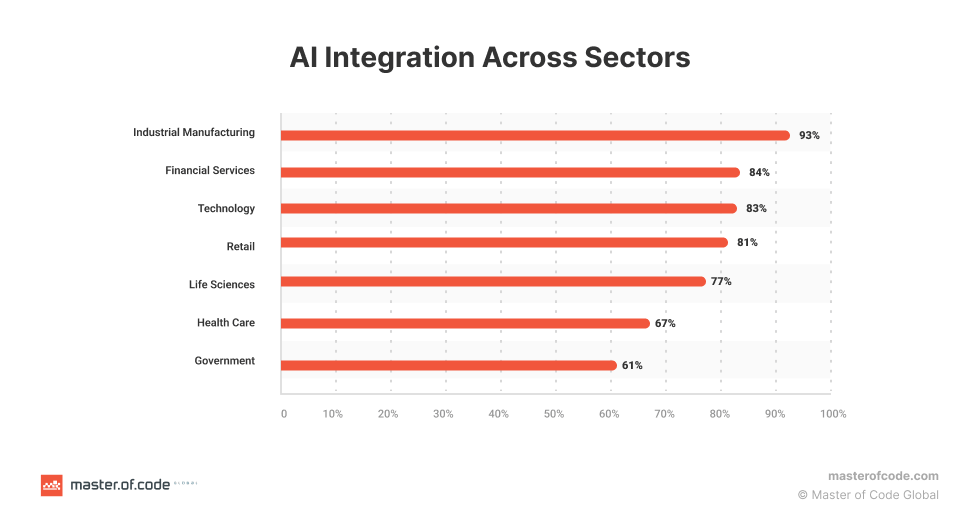
AI Adoption by Industries
AI in Retail
- The global AI market in retail is projected to reach $31.18 billion by 2028.
- In 2021, 73% of retailers planned to implement AI for pricing optimization.
- 75% of companies in retail have intentions to leverage AI to combat fraud.
- Amazon achieved a 225% decrease in “click to ship” time by utilizing machine learning (ML), reducing it to 15 minutes.
- 87% of AI adopters in retail are either using or considering AI for sales forecasting and email marketing improvement.
- 80% of retail executives anticipate AI automation adoption in their businesses by 2025.
- The retail sector leads in AI implementation, with 72% of retailers actively using AI.
AI in Telecom
- 52% of telecommunications organizations employ chatbots to enhance productivity.
- The AI telecommunications market is valued at $2.5 billion and is on the rise.
- 63% of IT and telecom sector organizations incorporate AI.
- Generative AI in Telecom is expected to surge from $1.6 billion in 2022 to an estimated $2.9 billion by 2026.
AI in Healthcare
- AI in the healthcare market experienced a growth rate of 41.2% from 2018 to 2023.
- Approximately 1 in 3 medical professionals now employ computer systems for diagnosis assistance.
- 19% of healthcare organizations are already implementing AI, with an additional 18% in the adoption process.
AI Business Functions Statistics
In the realm of business functions, AI has proven to be a transformative force, particularly in marketing, customer service, and sales. These sectors are increasingly relying on AI and machine learning to drive efficiency, enhance customer experiences, and boost revenues.
AI in Customer Service Stats:
- Data reveals how companies use AI to enhance the customer experience, including chatbots (73%), email composition (61%), product recommendations (55%), and personalized advertising (46%).
- 75% of consumers are comfortable with chatbots handling routine customer service tasks. Yet, only 33% approve of chatbots managing complex inquiries.
- 56% of businesses already use or plan to use AI for customer service. Other top AI uses include cybersecurity, fraud management (51%), digital personal assistants (47%), and customer relationship management (46%).
- Over 60% of business owners, specifically 64%, are optimistic that AI will enhance customer relationships.
- 67% of people expect to use messaging apps to communicate with businesses.
- AI-powered virtual assistants and chatbots can conduct 80% of simple customer inquiries.
- 49% of consumers prefer interacting with brands through AI-powered chatbots.
- 63% of consumers expect companies to use AI to personalize their experiences.
AI in Marketing Stats:
- Marketers are rapidly adopting AI, with 75.7% using AI tools for work. And 68% of B2B marketers use AI in their marketing strategies.
- 60% of marketers are positive about the rise of the AI industry. And 59% of marketers hold the belief that AI will bring about a revolution in the marketing industry.
- Marketing and sales departments show a 40% higher prioritization of AI and ML for revenue success compared to other industry departments. In fact, around 4 in 10 marketers believe that AI email marketing improves market revenue.
- AI-driven marketing could increase productivity by up to 35% and deliver cost savings of up to 30%.
- According to generative AI statistics, it is used by 69% of digital marketers, particularly for blog content creation. In addition, AI-driven content creation can reduce the cost of content production by up to 90%.
- 43% of American marketers reported that chatbots were effective in educating prospects. And 57% of B2B marketers used chatbots to understand their audience better.
- AI-driven personalization can improve conversion rates by up to 25%.
- While 67.7% of marketers acknowledge the benefits of AI, lack of knowledge and time are barriers to adoption.
- 37.4% of digital marketers are using AI detection tools.
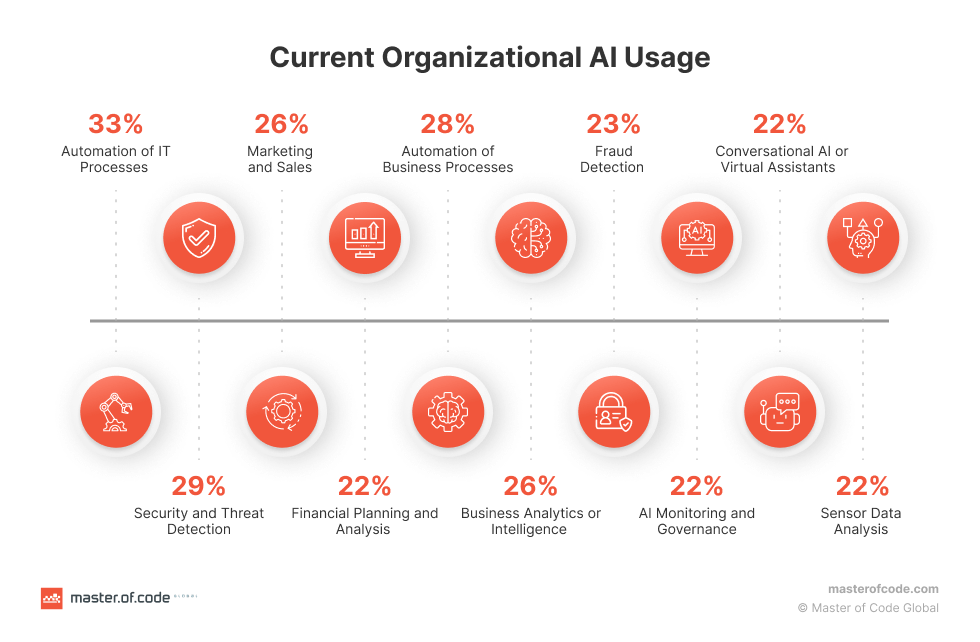
AI in Sales Stats:
- AI algorithms reveal data on which products generate the highest profit margins and offer valuable insight into a client’s purchasing habits.
- Recent data shows that using AI for sales: increases leads by 50%, reduces call times by 60%, and results in overall cost reductions of up to 60%.
- AI is used in various business functions, including product and service development (55%), marketing and sales (55%), and service operations (54%).
- 41.29% of marketers agree that using AI for email marketing generates higher market revenue, indicating AI’s impact on email-based sales strategies.
AI is revolutionizing customer service, marketing, and sales functions in distinct ways. As AI continues to evolve, these sectors will likely see further innovations and improvements in their respective processes and outcomes.
AI Statistics: Employment and Workforce
In the rapidly evolving landscape of AI, its impact on employment and the workforce is a topic of significant interest. Let’s delve into two perspectives to understand how AI is shaping the future of work.
The Upside of AI
- Labor Demand and Increased Productivity: AI is expected to create an additional labor demand of 21% to 33% in the global workforce by 2030. By 2035, AI-based technologies may increase labor productivity by up to 40% across various industries, adding $3.8 trillion GVA to manufacturing.
- New Job Creation: Despite concerns, AI is projected to create approximately 97 million new jobs, countering workforce displacement worries. Roles like software engineers and data engineers are in high demand for AI-related positions.
- Enhanced Job Satisfaction: Deloitte’s survey shows that 82% of business leaders believe AI enhances job satisfaction and performance.
- Skills and Jobs: AI-related skills are in demand. In the US, 2.05% of job postings required AI skills in 2022, a figure steadily increasing.
AI’s Threat to Jobs
- Job Displacement: McKinsey predicts that nearly 400 million workers (15% of the global workforce) may be displaced by AI by 2030. Six out of ten current occupations have over 30% of automatable activities.
- Job Concerns: A substantial 77% of people express concerns about AI causing job losses. AI adoption may replace 16% of all US jobs in less than five years, with a net job loss of 7%. Around 375 million people may need to switch careers by 2030.
- Challenges in Education: The current educational structures are unprepared for the employment effects of AI in 2030 and beyond.
- Job Vulnerabilities: According to the Pew Research Center, certain professions are particularly vulnerable to automation. These include office and administrative support (46%), legal work (44%), and architecture and engineering (37%).
- Mixed Views on Impact: While 82% of business leaders see AI enhancing job satisfaction, 47% believe it creates fear or concern. Different age groups have varying perspectives on AI’s impact on job creation.
In summary, AI has the potential to significantly impact the global workforce, both positively and negatively. It can create new opportunities and enhance productivity, but it also poses challenges related to job displacement and the need for workforce adaptation. Adaptation through education and innovation is crucial to mitigate these challenges.
Statistics About Artificial Intelligence Technologies
Technologies like chatbots, voice assistants, and ML are making substantial impacts. They are reshaping how businesses operate, how we interact with machines, and even the job market.
Chatbots/Conversational AI
- The global market for conversational AI is projected to reach $32.62 billion by 2030.
- Around 50% of large companies are contemplating increased investments in chatbot technology.
- Nearly 80% of CEOs have already made or plan to make changes in how they utilize conversational AI technologies to manage client engagement.
- 69% of survey participants prefer chatbots for receiving immediate responses. The same percentage would opt for chatbots for service-related inquiries.
- Remarkably, 80% of consumers who have interacted with chatbots report a positive customer experience.
Voice Assistants and Search
- About 36.6% of the United States population utilizes voice assistants.
- A substantial 66% of individuals who employ digital assistants use them on a weekly basis.
- An impressive 93% of users express satisfaction with their voice assistants.
- On average, voice assistants can successfully answer 93.7% of all search queries.
- A significant 72% of individuals report using voice search via their personal digital assistants.
- Approximately 68% of voice assistant users agree that personal assistants make their lives easier.
- Surprisingly, 71% of consumers prefer using voice searches as opposed to the traditional method of typing for queries.
- More than half of online shoppers in the United States employ voice assistants to aid in product research, and over a third use them to add items to their shopping lists.
Machine Learning
- 82% of companies seek employees with ML skills.
- 73% of business leaders believe machine learning can double employee productivity.
- The global machine learning industry is projected to grow at a 38.8% CAGR from 2022 to 2029.
- Top uses for AI and ML are improving customer experience and process automation.
- 61% of marketers prioritize machine learning and AI in their data strategies.
- AI and machine learning reduce sales call times by 60-70%.
- 74% of company leaders believe more investment in ML and automation can help achieve their goals.
As the information reveals, chatbots, AI voice assistants, and ML are rapidly becoming integral parts of our lives and industries. Staying informed about the trends and developments in these AI technologies is vital as we move forward into an AI-driven future.
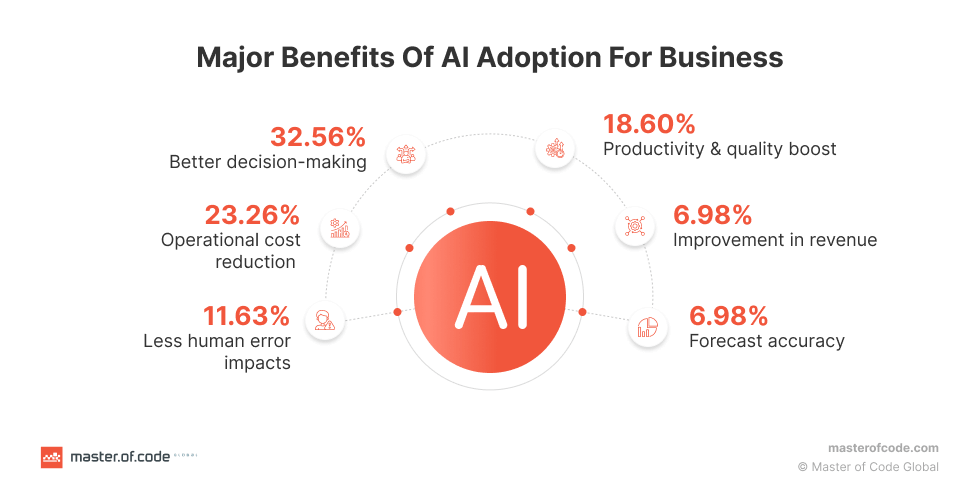
Future of AI Statistics
The future of artificial intelligence promises groundbreaking advancements that will reshape industries and transform the way we interact with technology.
- By 2027, AI technical debt will be reduced by 70% through simulation platforms.
- Organizations without AI model observability capability by 2026 will experience a 20% decrease in models running in production.
- Investment in AI startups relying on foundation models will surpass $10 billion through 2026.
- By 2026, 30% of new applications will feature personalized adaptive user interfaces driven by AI.
- AI-driven analytics tools will be the primary source of insight for 40% of digital product enhancements by 2026, up from 10%.
- Over 35% of software will use AI-based digital twins for UX development by 2027, up from less than 5%.
- By 2027, nearly 15% of new applications will be automatically generated by AI without human involvement.
The future of AI is filled with immense potential and innovation. From reducing technical debt to automating application generation, these numbers highlight the transformative impact AI trends will have on various sectors. As businesses and organizations adapt to this evolving landscape, harnessing the power of AI will be essential for staying competitive and driving progress in the coming years.
Increase avg. weekly conversion in 7.67x with chatbot launch for your eCommerce solution.

